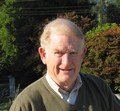CONVENING FOR ACTION IN BRITISH COLUMBIA: 2010 was a ‘watershed year’ for the Water Sustainability Action Plan, with outreach taking place at 10 major events in three regions, to provide peer-based learning for Living Water Smart, Building Greener Communities, and Adapting to a Changing Climate

“The Partnership’s outreach spotlight in 2010 was on the rollout of the second in the Beyond the Guidebook series of guidance documents for rainwater management and restoration of hydrologic function in urban watersheds. ‘Beyond the Guidebook 2010’ describes how a ‘convening for action’ culture has taken root in BC. Bringing together local government practitioners in neutral forums has enabled implementers to collaborate as regional teams. How to do it examples help decision-makers visualize what ‘design with nature’ policy goals look like on the ground,” stated Kim Stephens.










